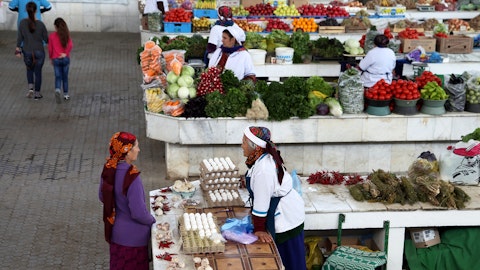Muslim, the fastest growing religious community in the world, will constitute 29.7% of the global population in 2050, and these are 10 countries where Muslim population will increase the most by 2050.
Pew Research Center’s latest data show that global religious landscape will go through two major changes. First, Christianity will remain the dominant religion in the world, but Islam will experience the greatest growth among all religions. In 2010, there were 2.17 billion Christians compared to 1.6 billion Muslims while in 2050 Christians will outnumber Muslims by only 156.59 million. Secondly, the percent of people who do not belong to any religious group, who are referred to as unaffiliated and who represent third-largest religious community after Christians and Muslims, will decline on global level although their number will rise in certain western countries (US, France, New Zealand). The number of Buddhists will not significantly change while the number of Jews and Hindus will increase.

Prazis/Shutterstock.com
Due to overall population growth in the next forty years, an increase in the number of Christians will not mean that the group will constitute a greater share of the world’s population (in 2050 the community will account for 31.4% of all people living on the Earth which is the same percentage as in 2010). On the other side, a number of Islam adherents, as well as their percentage share of the world’s population, will go up (in 2010 Muslims represented 23.2% of the global population, while in 2050 their share will be 29.7%). Moreover, Pew predicts that Muslims will outnumber Christians by the end of this century, as they will account for 35% of global population, compared to Christians who will account for 34% of all people living on the planet.
High fertility rates and low median age are two driving forces behind the rise of the Muslims. Islam adherents have the highest fertility rate (3.1 children per women), while the group’s median age is 23, which means they are 7 years younger compared to non-Muslims.
Currently, the greatest share of Islam followers lives in the Asia-Pacific region (60%). The group’s distribution will not change in the future, although India will surpass Indonesia as the country with the highest Muslim population. This won’t mean though that Islam will become the dominant religion in India since there will be 311 million Islam followers compared to 1.3 billion Hindus. By 2050 only in three countries, Islam will take the place of major religion – in Macedonia, where Muslim will represent 56.2% of all residents, Nigeria (58.5%) and Bosnia and Herzegovina (49.4%). Although Islam adherents will outnumber Christians in Nigeria, the country will have the third largest Christian population in the world. Besides Muslims, unaffiliated is another religious group which will surpass Christianity as the dominant religion in some countries. In France, New Zealand and the Netherlands the number of people with no religion will considerably rise in the future and in these three countries unaffiliated will become the major religious community.
In the USA, where less than 1% of all residents are Islam followers, the Muslim population will go up, and they will surpass Jews as the second-largest religious community. In Pew Research Survey from 2014, which aimed to describe how Americans perceive religious groups, Islam followers, together with atheists, were rated the most negatively. On the scale from 0 to 100, where 0 stands for the coldest, the most negative feeling and 100 for the warmest, the most positive one, Muslims’s average rating was 40 (Jews, Catholics, and Evangelical Christians received ratings around 60, Hindus and Buddhists got an average rate around 50, Atheist were given 41 average rate).
We excluded from this list countries where Muslims already represent a great majority and if you want to find out more about some of these places you can read our article 11 countries with the highest Muslim population. States from all regions, except Latin America, where the smallest percent of the world’s Muslims live, found a place on this list. We ranked countries according to the percentage increase, not according to the increase in absolute numbers.
And now, let’s see our list of countries where Muslim population will increase the most by 2050.
10. Canada
Increase: 218%
We start our list with Canada, only North American country on the list. Three largest religious groups in Canada – Christians, Muslims, and Unaffiliated – will record growth in the next forty years. Although the number of Christians will go up by one million in the next three decades, they will account for a smaller percent of the total population in 2050 than they did in 2010. Six years ago Christians constituted 69% of the country’s population, and in 2050 the percentage will drop to 60. The population of Muslims and Unaffiliated will grow at faster rates in the future compared to Christians. In 2010 Muslim community had 710.000 members (2.1%). Forty years later their number will be 2.26 million (5.5%), which is a 218% rise – largest increase among all religious groups.

Dan Breckwoldt/Shutterstock.com
9. New Zealand
Increase: 220%
With 50.000 members, the Muslim community was fourth largest in New Zealand in 2010, after Christians, Unaffiliated, and Hindus. In the next thirty years, the country’s religious landscape will see some changes. People without religion will outnumber Christians and become a religious majority. The Hindus population will also grow, but Muslim group will record the greatest increase. In 2050, there will be 160.000 Islam followers, which is 220% rise. Muslims will also be the youngest among religious groups (median age 28), and they will have the highest fertility rate. And now, let’s see what else we have in our list of countries where Muslim population will increase the most by 2050.

Yevgen Belich / Shutterstock.com
8. Malawi
Increase: 233%
Malawi, the next one in our list of countries where Muslim population will increase the most by 2050 is one of a few countries in which Muslim population, compared with other religious groups, will not record the greatest increase over the next thirty years. Their number will rise from 1.93 million (2010) to 6.42 million (2050), which is a 233% increase, while the number of Christians, which are and which will remain the majority in the country, will rise by 330%. The greatest percent of the country’s Muslims live near Malawi Lake, with more than half of them residing in two districts, Mangochi and Machinga, which are situated at the southern end of the lake.

BarryTuck/Shutterstock.com
7. Uganda
Increase: 248%
Uganda is the only place on this list of countries where Muslim population will increase the most by 2050 in which Christians will have higher fertility rates than Muslims in the future. Islam is currently the second largest religion with 3.84 million followers, and their number will reach 13.37 million in 2050 when they will account for 11.5% of the total population. Throughout history, Muslims have been targeted by different guerillas and terrorist groups, some of which have been affiliated with radical Islam. In the last two years, 12 Muslim clerics have been murdered, which has raised concerns among the community.

Pecold / Shutterstock.com
6. Portugal
Increase: 266%
In 2010, there were 30, 000 Muslims in Portugal who accounted for less than 1% of the population. Estimates show that their number will be 110,000 in 2015, accounting for 1.3% of all residents. One of the major changes in religious distribution in Portugal will be a significant fall of Christian population which will decrease by 23.5%. Despite the decline, Christianity will remain dominant religion with 7.5 million followers.

Arseniy Krasnevsky/Shutterstock.com
5. Ireland
Increase: 300%
In Ireland, ranked as fifth on our list of 10 countries where Muslim population will increase the most by 2050, Islam adherents represent the largest religious majority. Currently, around 50,000 Muslims account for 1.1% of the total population. By 2050 the number of Muslims will reach the number of 200,000, or in other words, they will constitute 3% of all residents. At the same time, the number of Christians will also increase, but their share in the total population will fall to 83.5% from 92%.

Patryk Kosmider/Shutterstock.com
4. Spain
Increase: 302%
Among listed European countries, Spain, the number 4 in our list of countries where Muslim population will increase the most by 2050, has the greatest Muslim population. In 2010, there were 980,000 Islam followers, while in the next 40 years the number will rise by 302% reaching 3.94 million. Christian population will decline from 36.24 million to 34.1 million or, in percentage terms, it will go down from 78.6% to 65.2% of the total population. The number of people without religion, who, currently, constitute the second-largest religious group with 8.7 million members, will go up reaching 13.85 million.

lidian Neeleman/Shutterstock.com
3. Rwanda
Increase: 347%
In the predominantly Catholic country Rwanda, Muslims represent the largest religious minority. In 2010 there were 190,000 of them, and by 2050 the group will have 850,000 members, which is a 347% increase. The group started to grow after the genocide in 1994, which was supported by some Church representatives and which made some people question their faith in Christianity and turn to Islam. Like in many other places in the world the number of people without religious affiliations will more than double.

2. Finland
Increase: 375%
In 2010, there were 40,000 Muslims living in Finland constituting less than 1% of the country’s total population. Their number will reach 190,000 by 2050, which is a 375% increase. Despite the rise, which will mean that Muslims will account for 3.4% of all residents, Christians will continue to represent the great majority. Still, their number will go down during the next thirty years, falling from 4.30 million (2010) to 4.04 million (2050). At the same time, the number of people who do not belong to any religion will go up, reaching 1.29 million (23.2% of the population). And now, let’s see the number one in our list of countries where Muslim population will increase the most by 2050.

Oleksiy Mark/Shutterstock.com
1. Belarus and the Czech Republic
Increase: 900%
The first place on the list of 10 countries where Muslim population will increase the most by 2050 is shared by Belarus and Czech Republic, two places where Islam adherents account for less than 1% of the total population. In Belarus, there are 20,000 Muslims, and by 2050 the group will have 200,000 members (they will constitute 2.4% of all residents), while in the Czech Republic the number of Islam followers will increase from 10,000 to 100,000. Belarus is a Christian country, and although the number of Christians will go down in the future, their share of the total population will not change. On the other side, people without religion represent the dominant religious group in the Czech Republic – there are 8.02 million unaffiliated accounting for 76.4% of all residents. Their number is going to decline, but their share in the total population will increase reaching 78.9% by 2050.

Veronika Galkina/Shutterstock.com





